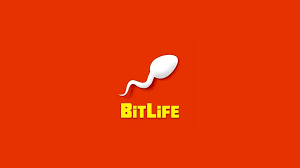The financial world is evolving fast, and at the center of this transformation is the exciting world of crypto asset management. As digital assets like cryptocurrencies and tokenized investments become more mainstream, blockchain technology is revolutionizing how we think about wealth. From cryptocurrencies to NFTs, managing your digital assets has never been more accessible or innovative.
In this post, we’ll explore how custom crypto token development, smart contract automation, and cross-chain token development are changing the game. We’ll also dive into how these innovations in token development for ICOs, NFT token development services, and multi-chain solutions are shaping the future of digital wealth management.
The Fundamentals of Token Development
Custom Crypto Token Development: Creating Tailored Digital Assets
When it comes to crypto asset management, custom crypto token development is at the core of most successful strategies. Custom tokens are designed to represent real-world assets, whether that’s a piece of art, a real estate investment, or even a business share.
Take, for example, a real estate startup creating a custom token to represent fractional ownership in properties. This allows individuals to invest in high-value real estate with small amounts, democratizing access to otherwise exclusive investment opportunities. Similarly, startups can raise funds and engage global investors through tokenized ICOs or IEOs, giving them a stake in the project from day one.
Token Standards: ERC-20, TRC-20, and Why They Matter
The backbone of token development lies in the token standards we use. ERC-20 and TRC-20 are the two most popular standards, particularly for creating fungible tokens. These tokens are used for everything from ICO fundraising to DeFi (Decentralized Finance) applications.
For example, the ERC-20 token standard is widely used in ICOs because it’s compatible with most wallets and exchanges. TRC-20, on the other hand, is gaining popularity due to its faster transaction speeds and lower fees, making it a preferred choice for applications that require high-volume transactions.
Why Crypto Asset Management Needs Innovation
The Importance of Efficient Crypto Asset Management
Managing a growing portfolio of digital assets can be complex. With cryptocurrencies, NFTs, and tokenized investments becoming commonplace, there’s a real need for better, more efficient ways to manage these assets. Traditional asset management systems rely on centralized institutions, which are slow and costly. Blockchain-based solutions, however, offer transparency, security, and automation—all at a fraction of the cost.
Take DeFi protocols like Aave or Compound—they’re transforming how we lend and borrow cryptocurrencies. Instead of relying on banks to mediate transactions, you can engage directly with the platform via smart contracts, cutting out middlemen and automating complex financial tasks.
Blockchain’s Role in Reshaping Wealth Management
Blockchain’s most significant strength in asset management lies in its decentralized nature. The transparency and security it offers make it ideal for managing digital wealth. With blockchain, transactions are secure, transparent, and irreversible, ensuring that every action in your asset management system is recorded for future reference.
For instance, an investor managing a crypto portfolio could automate their holdings and transactions using smart contracts. This eliminates the need for constant manual intervention while ensuring that assets are always aligned with the investor’s strategy.
Multi-Chain and Cross-Chain Token Development: More Flexibility, More Control
As the crypto world expands, multi-chain and cross-chain token development are gaining traction. These technologies make it possible to move tokens across different blockchain networks, which means that digital assets can be managed more flexibly and with fewer limitations.
Imagine a scenario where you have a portfolio consisting of Ethereum-based tokens, TRON tokens, and even tokens from Binance Smart Chain (BSC). With multi-chain and cross-chain solutions, managing these assets becomes seamless, allowing users to transfer, trade, and store them across different platforms with ease.
Innovations in Token Development for Asset Management
How Smart Contract Integration is Revolutionizing Token Management
Smart contracts are a powerful innovation that enables automated, secure transactions. In token development, smart contracts make asset management much easier. They can automate portfolio rebalancing, token transfers, and other actions, saving time and reducing human error.
For instance, let’s say an investor has a portfolio of several cryptocurrencies. With smart contracts, they could set up automatic rules to rebalance their portfolio based on price movements—no more manually selling one asset to buy another. It’s the future of automated crypto asset management.
Token Deployment for Startups: Unlocking New Opportunities
For startups, token deployment offers a unique way to raise capital and build a community around their project. By launching tokens through ICO or IEO, startups can tap into a global pool of investors and give them a stake in the project’s success from the beginning.
Take Polkadot, for example—a multi-chain blockchain project. It used an ICO to fundraise for its ambitious vision of enabling different blockchains to communicate with each other. Through tokenization, projects like this can rapidly scale and integrate into the global crypto ecosystem.
Key Technologies Driving the Future of Crypto Asset Management
DeFi and the Changing Landscape of Crypto Asset Management
The rise of DeFi (Decentralized Finance) has unlocked an entirely new world for crypto asset managers. DeFi platforms like Uniswap and Aave provide users with the ability to borrow, lend, and trade assets without going through traditional financial institutions. These platforms are built entirely on blockchain, giving users control over their assets while eliminating middlemen and their associated costs.
For example, by locking crypto into a liquidity pool, users can earn yield by providing liquidity to a decentralized exchange. It’s an entirely new way to generate returns and manage digital wealth.
Crypto Exchange Integration: Ensuring Liquidity and Flexibility
For effective crypto asset management, integrating your tokens with crypto exchanges is crucial. By enabling seamless trading, buying, and selling of tokens, exchanges ensure that tokens are liquid and easily accessible when needed.
Let’s say you have a diversified crypto portfolio that includes tokens from various blockchains. Exchanges like Binance or Coinbase allow users to trade these tokens efficiently, ensuring that liquidity is always available, and helping asset managers execute strategies in real-time.
Blockchain Oracles: The Bridge to Real-World Data
Blockchain oracles are a critical technology for integrating real-world data into blockchain-based applications. They bring off-chain data into smart contracts, allowing tokens to react to real-world events like stock prices or commodity changes.
Imagine you’re managing a tokenized commodities portfolio, and you want to adjust your holdings based on global oil prices. By using oracles, your smart contract can automatically adjust your portfolio every time the price of oil changes, ensuring your investments are always optimized.
Real-World Examples of Crypto Asset Management Innovations
Platforms Leading the Way in Tokenized Asset Management
Platforms like Finoa and Tokenomy are making it easier for individuals and businesses to manage their digital wealth. These platforms offer a combination of custom crypto token development, secure asset storage, and trading solutions that empower users to manage portfolios efficiently and securely.
NFTs: A New Asset Class for Diversified Portfolios
NFTs are no longer just for digital art; they are becoming a key part of diversified crypto portfolios. NFT token development services allow individuals to invest in and manage assets like art, real estate, and even luxury goods, all tokenized and traded on the blockchain.
Imagine you’ve tokenized a luxury watch as an NFT and added it to your portfolio. Not only does it represent ownership, but it’s also a tradable asset that can increase in value, just like any traditional investment.
The Future of Token Development and Crypto Asset Management
The Role of Cross-Chain Solutions in Shaping Digital Wealth
Cross-chain solutions are vital for the future of crypto asset management. They ensure that assets can be transferred and managed across different blockchain networks, increasing flexibility and accessibility for users.
As more blockchains integrate with one another, the boundaries between ecosystems will blur, making it easier to manage a diverse range of assets from multiple platforms in one seamless experience.
Regulatory Evolution and the Future of Crypto Asset Management
As crypto becomes more mainstream, regulatory frameworks will evolve to ensure compliance and protect investors. The future of token development and crypto asset management will involve balancing innovation with security and compliance, making it important for developers and asset managers to stay ahead of regulatory changes.
Conclusion: Innovating the Future of Digital Wealth
The world of crypto asset management is full of potential, thanks to innovations like token development, smart contracts, and cross-chain interoperability. As blockchain technology continues to evolve, the future of digital wealth management will be more accessible, automated, and secure than ever before.
The key to navigating this exciting future? Embrace innovation, stay informed, and be ready to adapt as the world of digital assets continues to shape the financial landscape.


































































